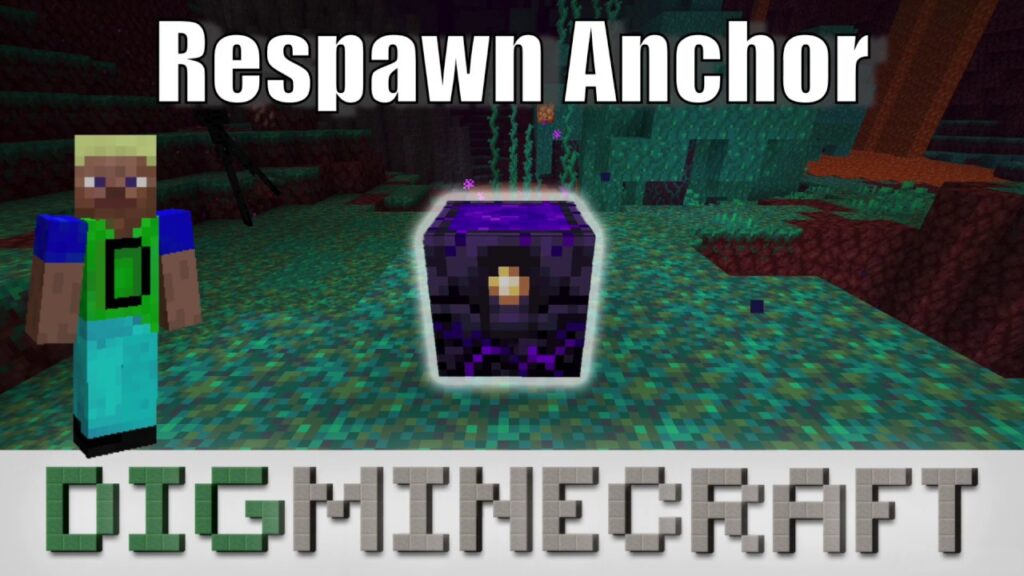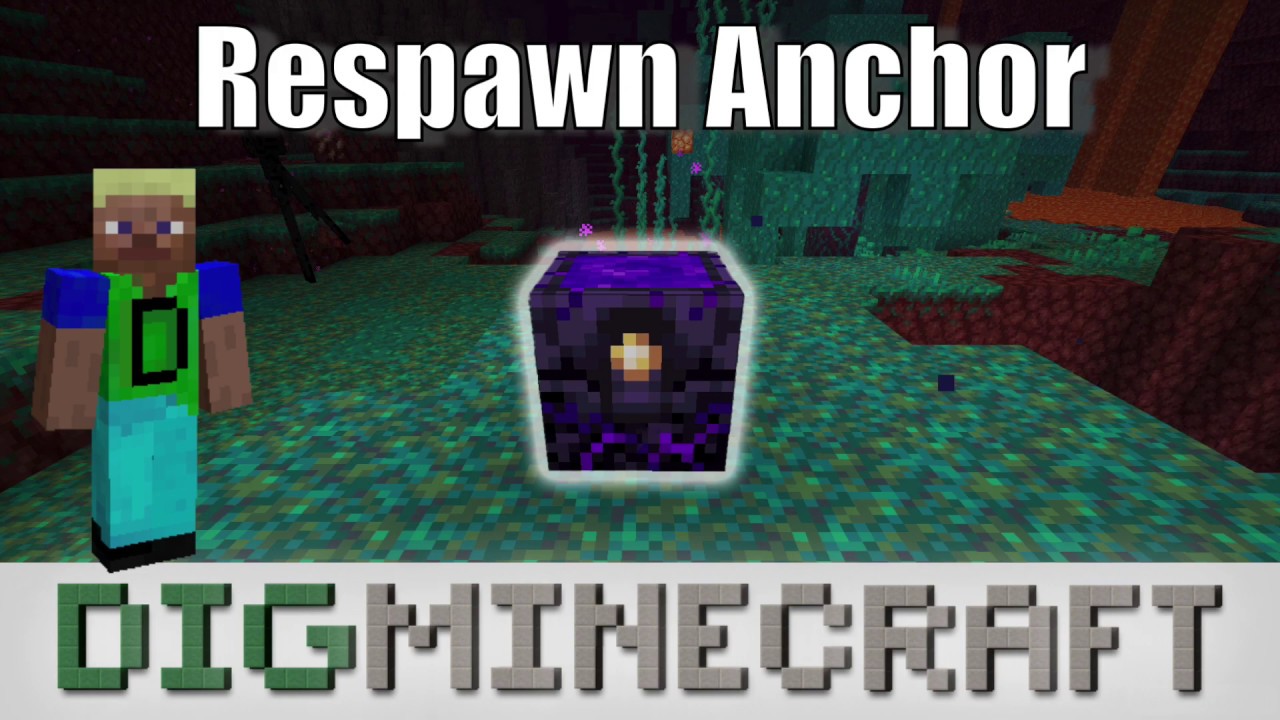
Respawn Anchors: Mastering Nether Survival in Minecraft
The Nether, a fiery and dangerous dimension in Minecraft, presents unique challenges to players. Unlike the Overworld, death in the Nether can lead to significant setbacks, often requiring long and perilous journeys to retrieve lost items. However, the introduction of the respawn anchor has revolutionized Nether survival, offering a safe and reliable respawn point within this hostile environment. This article delves into the intricacies of the respawn anchor, exploring its crafting, usage, limitations, and strategic implications for Minecraft players.
What is a Respawn Anchor?
A respawn anchor is a block in Minecraft that allows players to set their respawn point within the Nether. This is crucial because beds, the standard respawn point setters in the Overworld, explode when used in the Nether, resulting in immediate death. The respawn anchor provides a much-needed alternative, enabling players to explore the Nether more confidently and efficiently.
Crafting a Respawn Anchor
Crafting a respawn anchor requires specific resources found within the Nether, making it a mid-to-late game item. The crafting recipe consists of:
- Crying Obsidian: Six blocks of crying obsidian are needed. Crying obsidian can be found in ruined portals and bastion remnants within the Nether.
- Glowstone: Three blocks of glowstone are needed. Glowstone is abundant in the Nether, typically found hanging from ceilings in caves and tunnels.
To craft the respawn anchor, place the six crying obsidian blocks around the perimeter of the crafting table grid, leaving the center square empty. Then, place the three glowstone blocks in the center row. This will produce one respawn anchor.
Using a Respawn Anchor
Once crafted, the respawn anchor must be placed in a safe and accessible location within the Nether. To activate the respawn anchor, players must charge it using glowstone. Each glowstone block used to charge the anchor adds one charge, up to a maximum of four charges. To charge the anchor, simply interact with it while holding glowstone. Each interaction will consume one glowstone block and add one charge.
To set the respawn anchor as your respawn point, interact with the charged anchor. The anchor will emit a visual and auditory cue, indicating that it is now your active respawn point. It is important to note that the respawn anchor must have at least one charge to function as a respawn point.
When a player dies in any dimension and has a charged respawn anchor, they will respawn at the anchor’s location. The anchor will then lose one charge. If the anchor runs out of charges, it will no longer function as a respawn point, and the player will respawn at their world spawn point (usually the location where they first entered the world) or a bed in the Overworld if one is set. It’s crucial to regularly recharge the respawn anchor to maintain its functionality.
Limitations and Considerations
While the respawn anchor is a valuable tool, it has several limitations that players should be aware of:
- Overworld and End Usage: Attempting to use a respawn anchor in the Overworld or the End dimension will cause it to explode, similar to a bed in the Nether. This explosion can damage nearby blocks and potentially harm the player.
- Charge Depletion: The limited number of charges necessitates careful management of glowstone resources. Players should ensure they have a steady supply of glowstone to keep the anchor operational.
- Placement: The respawn anchor should be placed in a secure location to prevent it from being destroyed by mobs or other players (in multiplayer environments). A well-defended base is ideal.
- Chunk Loading: Like any important structure, the chunk containing the respawn anchor should be kept loaded to ensure it functions correctly. This can be achieved using chunk loaders or by regularly visiting the area.
Strategic Implications
The introduction of the respawn anchor has significantly impacted Nether gameplay strategies. Here are some key implications:
Exploration
With a reliable respawn point in the Nether, players can explore more aggressively and venture further from their portals. This allows for more efficient resource gathering and exploration of structures like fortresses and bastion remnants. The fear of losing progress due to death is significantly reduced.
Base Building
The respawn anchor encourages the establishment of permanent bases within the Nether. Players can now create secure outposts for storage, crafting, and resource processing. This enhances the overall Nether experience, transforming it from a temporary transit zone to a viable long-term residence. Consider building near important resources like ancient debris, using the respawn anchor as a safety net. [See also: Nether Base Design Ideas]
Resource Gathering
The Nether is a rich source of unique resources, including quartz, nether wart, and ancient debris. The respawn anchor makes it safer and more convenient to mine these resources, as players can quickly return to their base after each trip. This boosts the efficiency of resource gathering operations.
Combat
When engaging in combat with Nether mobs, such as ghasts, blazes, and piglins, the respawn anchor provides a safety net. Players can take more risks knowing that they can quickly respawn and retrieve their gear. This is particularly useful when tackling challenging structures like Nether fortresses, where blazes are common. Having a respawn anchor nearby allows for repeated attempts without significant setbacks.
Advanced Tips and Tricks
- Backup Anchors: Consider creating multiple respawn anchors in different locations within the Nether. This provides redundancy in case one anchor is destroyed or becomes inaccessible.
- Glowstone Farms: To ensure a steady supply of glowstone, consider setting up a glowstone farm. This can be done by using silk touch to collect glowstone and then replanting it in a suitable location.
- Safe Rooms: Build a small, secure room around the respawn anchor to protect it from mobs and environmental hazards. This room should be well-lit to prevent mob spawning.
- Chunk Loading Strategies: Employ chunk loaders or regularly visit the area around the respawn anchor to ensure that it remains loaded and functional. This is especially important in multiplayer environments.
- Coordinate with Teammates: In multiplayer, coordinate with your teammates to establish a network of respawn anchors throughout the Nether. This allows for rapid travel and mutual support.
The Future of Nether Survival
The respawn anchor has fundamentally changed the way players approach the Nether in Minecraft. It has transformed the dimension from a dangerous and unforgiving environment to a more manageable and rewarding place to explore and build. As Minecraft continues to evolve, the respawn anchor is likely to remain a crucial tool for Nether survival. Future updates may introduce new ways to interact with the anchor, such as improved charging methods or additional functionalities. [See also: Minecraft Update Predictions]
Conclusion
The respawn anchor is an essential item for any Minecraft player looking to conquer the Nether. By providing a safe and reliable respawn point, it empowers players to explore, build, and gather resources with greater confidence. Understanding its crafting, usage, limitations, and strategic implications is crucial for maximizing its benefits. Whether you are a seasoned Minecraft veteran or a newcomer to the Nether, mastering the respawn anchor is key to thriving in this challenging dimension. So, gather your crying obsidian and glowstone, craft your anchor, and embark on your Nether adventures with renewed vigor!

